Classic Lemon Curd
This post may contain affiliate links. See my disclosure policy.
A sweet burst of Summer sunshine, this is one condiment you must make part of your regular rotation! This classic Lemon Curd recipe is easy to make and results in the creamiest texture and loveliest flavor. Use it as a spread for toast, muffins or scones, use it as a filling for cakes and tarts, serve with pancakes or waffles, enjoy it warmed up as an ice cream topping, and much more! However you decide to use it, you won’t be able to keep your fingers out of the lemon curd jar!
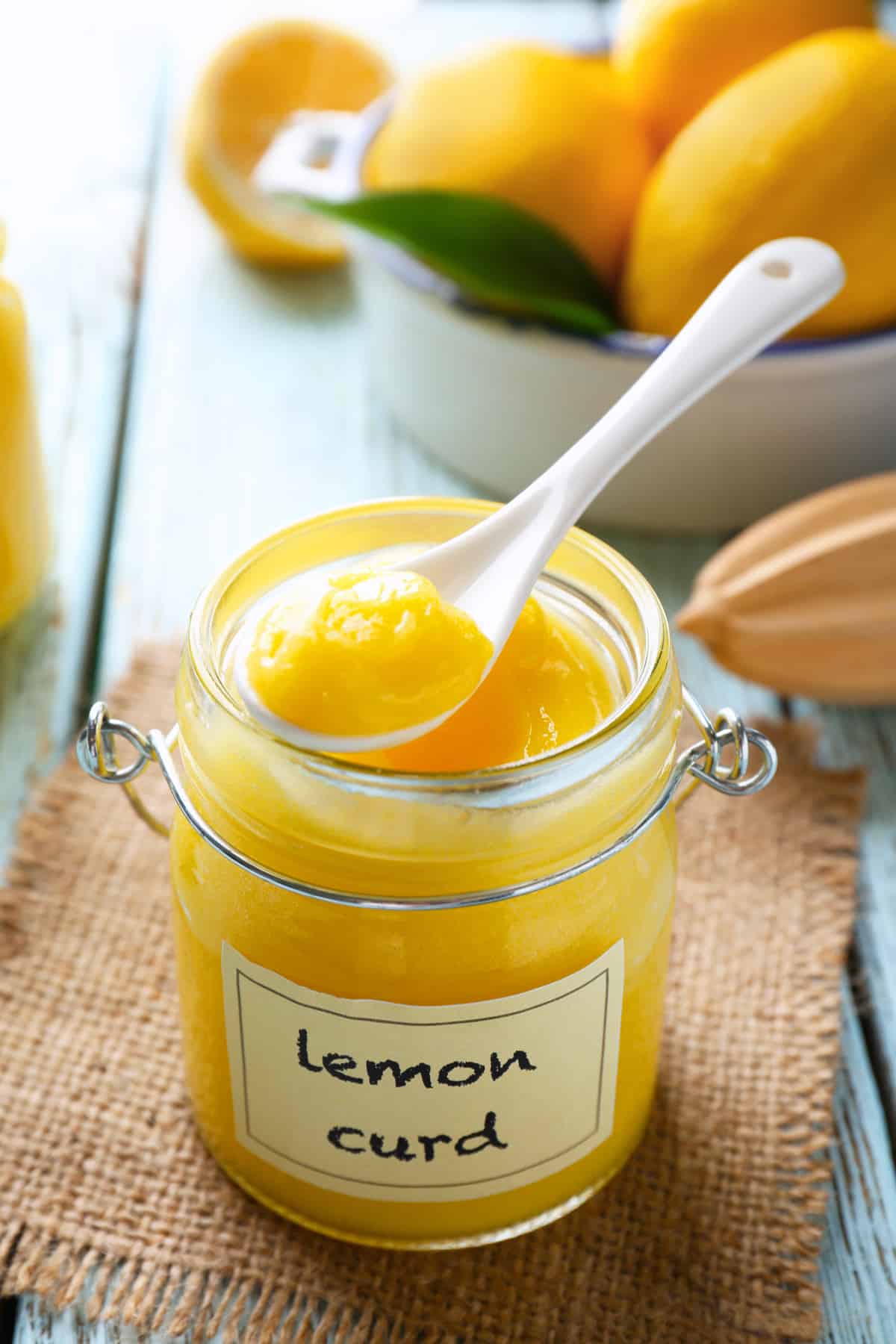
Fresh, creamy, and citrusy, it’s ultimate Summery spread! Put some on your tongue and experience a delightfully sweet zing! I first fell in love with lemon curd when I when lived in Cambridgeshire, England. I lived there for six years and enjoyed this delicious spread on a regular basis. It’s not well-known here in the U.S. but it it’s practically a staple in Great Britain where it has been enjoyed since the 19th century.
Good lemon curd is hard to find. Either the texture isn’t right or the flavor is off. What I often find in many homemade versions is that it just tastes too “eggy.” So here is a foolproof, kitchen-ready lemon curd recipe that is easy to follow with positively perfect results. This lemon curd is fairly thick, which makes it ideal for spreading (without it dripping off whatever you’re eating) as well for filling cakes, tarts, and cupcakes.
What is Lemon Curd?
Lemon curd is a thick, smooth, and creamy spread made from lemon juice, sugar, butter, and egg yolks. It has a sweet, tangy and wonderfully vibrant lemon flavor. It’s commonly used as a spread, filling or topping in various desserts, such as tarts, pies, cakes, cupcakes, muffins, scones, and crêpes.
Where Did Lemon Curd Originate?
Lemon curd originated in England during the 19th century when early versions were also known as “lemon cheese” or “lemon spread”. The earliest recipes were made without butter but later on added it to improve the texture and the flavor. Lemon curd remains popular throughout Great Britain and has since “spread” throughout many areas of the world where it is enjoyed as a delicious accompaniment to a variety of desserts and baked goods.
How to Use Lemon Curd
Lemon curd is a versatile and delicious spread that can be used in a variety of ways. Here are few ideas:
- Spread on Crumpets, Toast, English Muffins, or Scones.
- Filling for Cakes and Cupcakes
- Topping for Pancakes and Waffles. Try our Whole Wheat Sourdough Waffles or our Gluten Free Oat Waffles.
- Tart or Pie Filling: Fill pre-baked tart shells with it for a quick and easy lemon tart.
- Crepe Filling. Try our Gluten Free Crepes.
- Yogurt Parfait: Layer lemon curd with Greek yogurt and granola.
- Ice Cream Topping
- Cheesecake Topping
- Thumbprint Cookies
- Filling for Lemon Bars/Squares
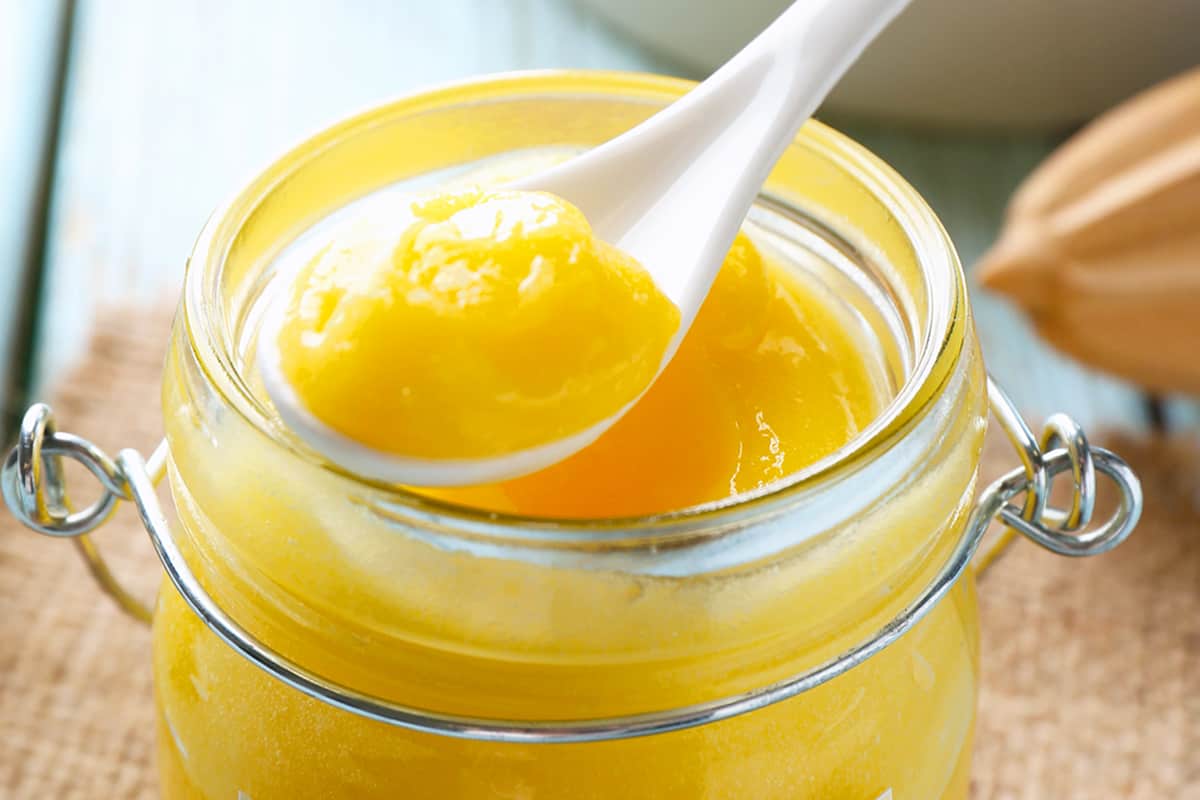
What To Do With Leftover Egg Whites
Lemon curd is made with egg yolks, but don’t throw away those egg whites! Here are several delicious ways to put those leftover egg whites to use:
- Meringues
- Angel Food Cake
- Macarons
- Egg White Omelette
- Egg White Frittata
- Pavlova
- Marshmallows
- Coconut or Hazelnut Macaroons
- Soufflé
- Swiss Buttercream Frosting
- Amaretti Cookies
- Dacquoise
- Financiers
Can You Freeze Lemon Curd?
Yes! Once it is completely cool put it in an airtight freezer-safe container and store it in the freezer where it will keep for up to a year. That’s right, a whole year! When you’re ready to use it let it thaw in the fridge overnight.
Lemon Curd Recipe
Let’s get started!
First, a couple of taste troubleshooting tips. Many homemade lemon curd recipes fall victim of “off” flavors; that off-putting “eggy” flavor and that undesirable “metallic” flavor. There are two important steps you can take to avoid both of those issues.
How to Avoid that “Eggy” Flavor
Be careful to remove as much of the egg whites as possible when separating the eggs. It is the egg white that has the sulphuric, “eggy” flavor.
How to Avoid that “Metallic” Flavor
Use a glass or stainless steel mixing bowl and a stainless steel pot for preparing the lemon curd. The high acidity content of the lemon can cause the metal to leach into the lemon curd resulting in a “metallic” flavor, so do not store the lemon curd in anything containing metal.
Okay, let’s do this!
Add the sugar and lemon zest to a food processor fitted with a steel blade. Pulse until the zest is finely ground up in the sugar.
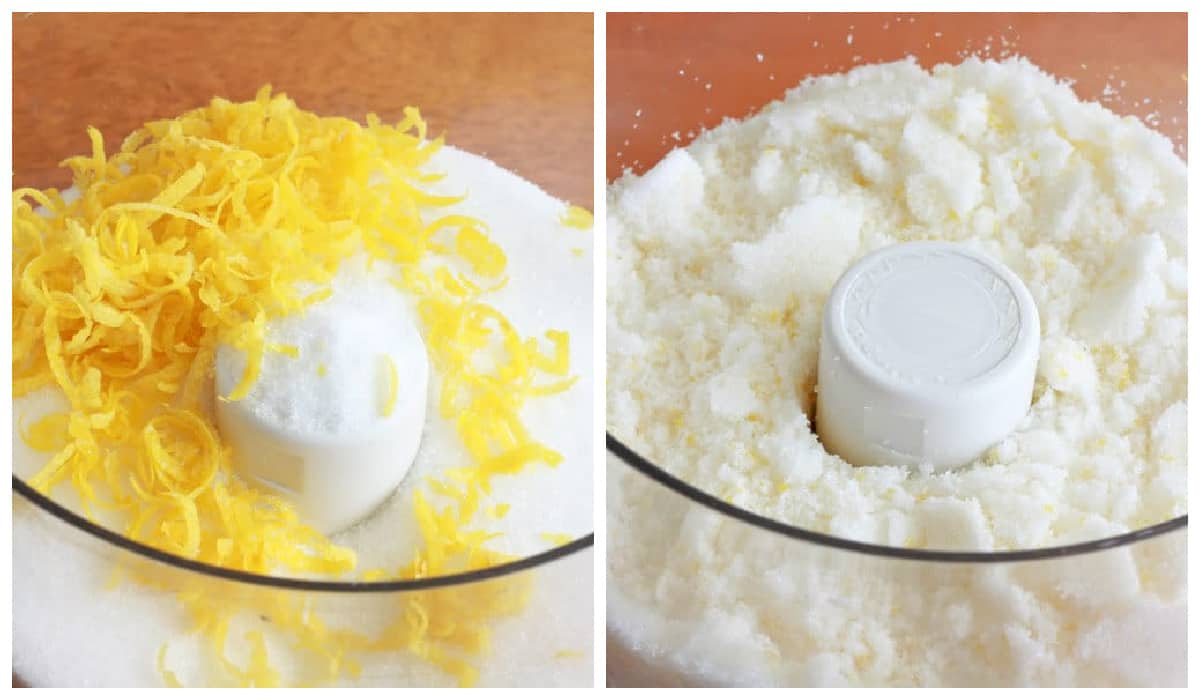
Place the butter and lemon sugar in a bowl and cream it for several minutes until fluffy. Use a glass mixing bowl, not metal. Use a stainless steel pan to cook the lemon curd. The high acidity content can otherwise leach some of the metal into the mixture resulting in a “metallic” taste.
Add the egg yolks, one at a time, and beat until combined.
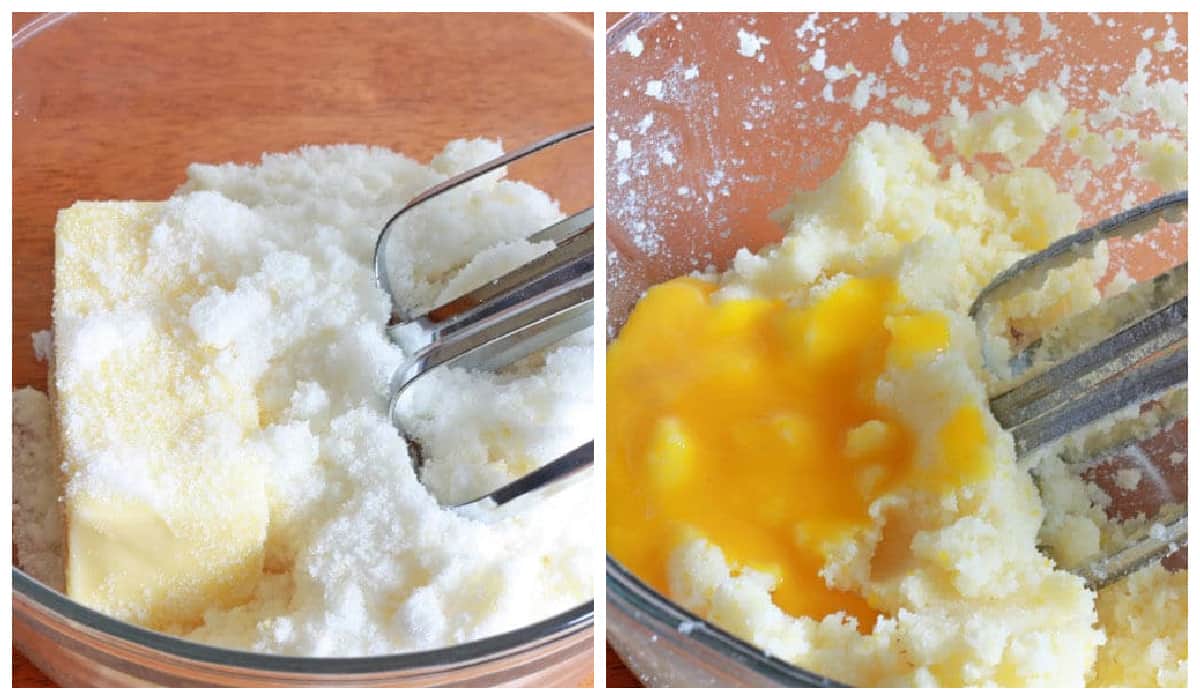
Add the fresh lemon juice and salt and beat until combined.
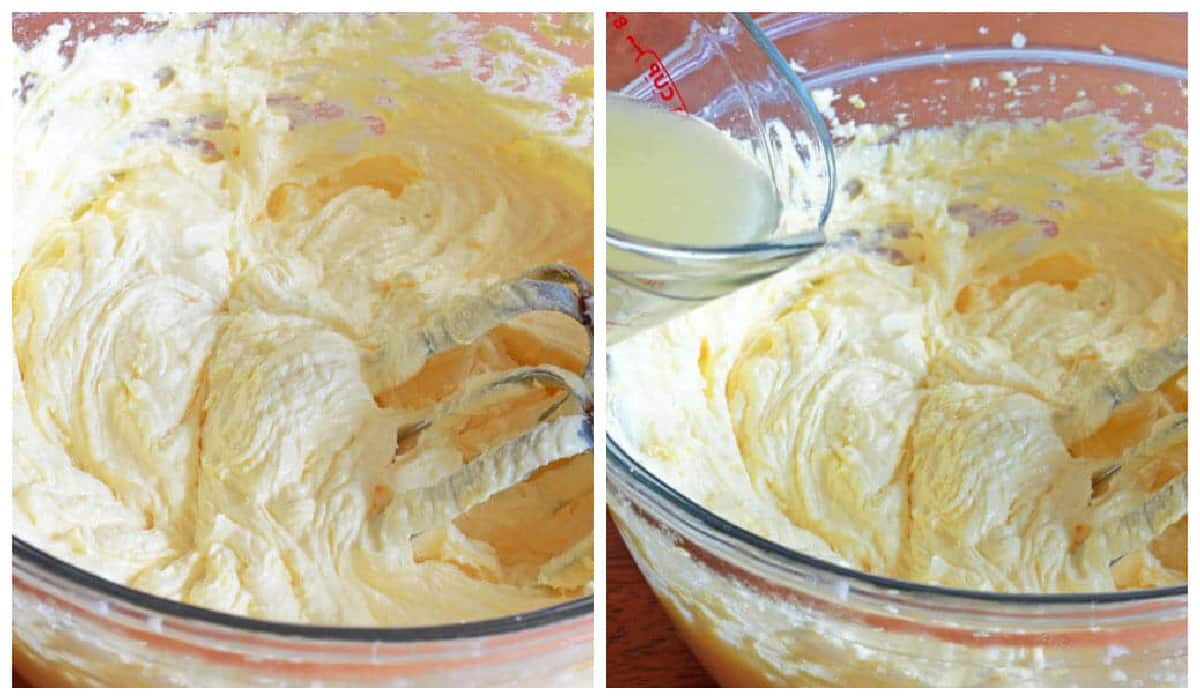
Place the mixture in a stainless steel pot over low heat and stir continuously until the mixture has thickened and has reached 170 F. Use a candy thermometer to check. This will take about 20 minutes. Be patient and do not try to heat it too quickly or else the eggs will scramble.
Allow the lemon curd to cool and then refrigerate.
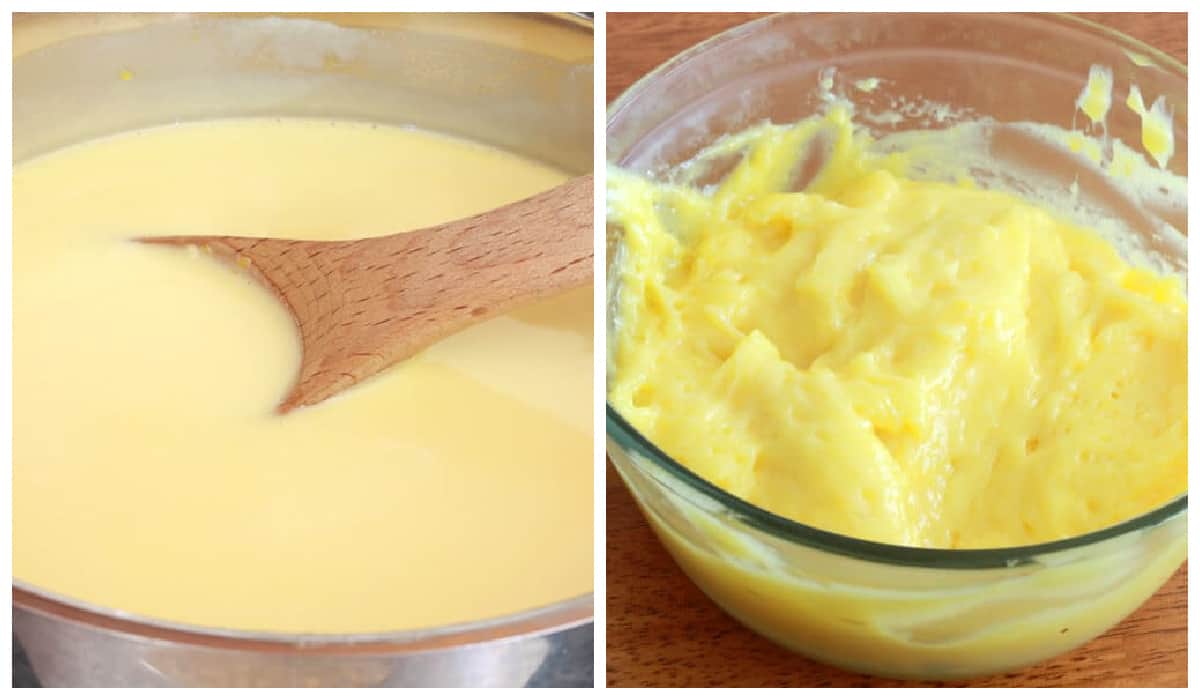
Store the lemon curd in a glass jar with a lid and keep it in the refrigerator where it will last for up to a week in the fridge. It can also be frozen in an airtight freezer-safe container for up to a year.
Enjoy!
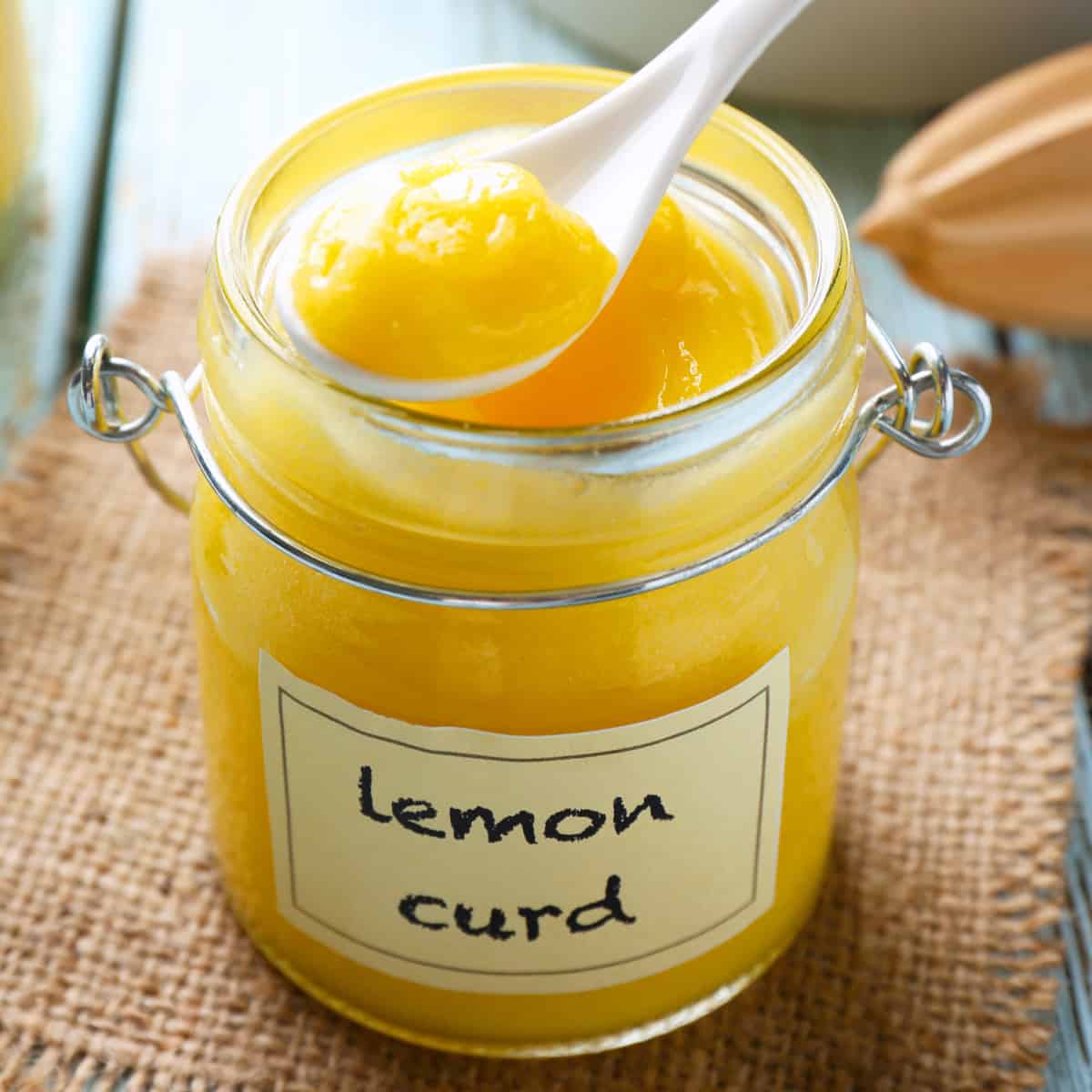
Save This Recipe
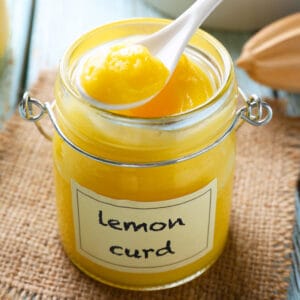
Classic Lemon Curd
Ingredients
- 3 large lemons , washed (organic recommended)
- 1 1/2 cups sugar
- 1/2 cup unsalted butter , room temperature
- 5 large egg yolks
- 1/2 cup lemon juice
- pinch of salt
Instructions
- Zest the lemons. Be careful to avoid the white pith as it is very bitter. Juice the lemons.
- Add the sugar and lemon zest to a food processor fitted with the steel blade and pulse until the zest is finely ground up with the sugar.In a medium glass or stainless steel mixing bowl, cream the butter and the lemon sugar mixture until fluffy. Add the eggs, one at a time, and beat until combined. Add the lemon juice and salt and beat until combined.
- Pour the mixture into a medium stainless steel saucepan and cook over low heat stirring continuously until thickened and the temperature has reached 170 F, about 20 minutes. Check the temperature using a candy thermometer.Remove from the heat, cool completely, and store in the fridge in a glass jar with a lid. It will keep in the fridge for up to a week. It can also be frozen in a freezer-safe airtight container for up to a year (let it thaw in the fridge overnight). Makes about 2 cups.
Nutrition
Originally published on The Daring Gourmet July 8, 2013
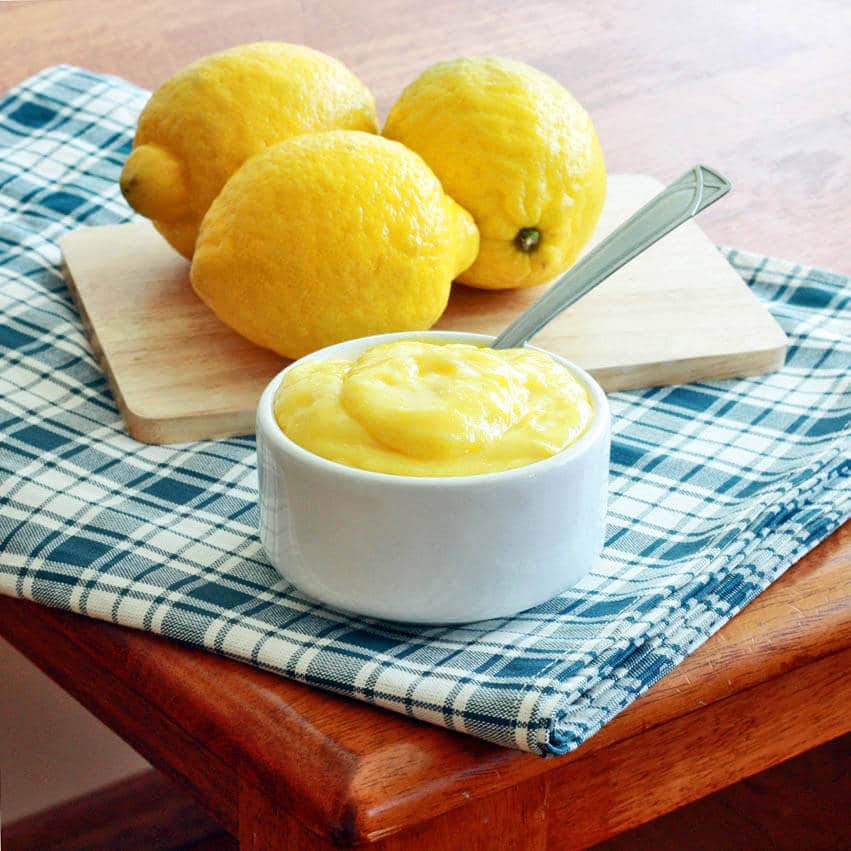



















This is by far the best lemon curd that I have ever made! I use it to fill my cupcakes. But, eating it by the spoonful is good too! Thanks for sharing the recipe.
Christine, I am so happy to hear that, thank you! And I bet your cupcakes are amazing!
Thanks for this receipe. I m going to try it!
Wonderful! We love this lemon curd!
There is such a difference in lemons, approximately how much juice should there be?
I’ve never measured it before. Whether you use large or small lemons the curd will still turn out great and the consistency will not be too runny or too thick. I recommend using lemons on the larger size (at least 2 inches high, which is pretty average) so that you get plenty of lemon flavor. Enjoy!
I’ve tried FIVE recipes and this is the best. I did, however, use 3 whole eggs and 2 large yolks. I read online the whites aid in the taste of lemon curd so I added the two whole eggs. The texture of this recipe is superb!!
Hi Mia, I’m so happy you enjoyed it! Adding whole versus just the yolk is simply a personal preference thing. I use egg yolks only in this recipe as many people complain about the sulfur flavor generated by the egg whites (plus, more yolks = creamier texture). But if you don’t mind the sulfur flavor then there is no reason not to use the whole egg. And using a combination of yolks and whole eggs like you did will still result in a nice, creamy texture. On a side note, I love to use this curd for baking as well and it freezes well for that purpose. That way I have it on hand when I need it and can just thaw it out and add it to whatever I’m baking. Thanks so much for your feedback and enjoy your lemon curd!
It funny that you think it woul even last a week or longer. It was gone in one day here. Obviously the family loved it.
One day! That’s great! It really is soooo delicious. Once you take a spoon to sample it, it’s really hard to stop! :) Thanks for your feedback, Jennifer!
Been stirring for over 30 min and it’s still has the consistency of tomato soup :/
I can’t wait to try this Lemon Curd! Sounds really good!
Thank you, Kimberly :) I look forward to hearing what you think once you’ve had the chance to try it!
Creamy Homemade Lemon Curd http://t.co/hfUXKPmAtR
looks wonderful!!! I’ll be making this for sure!
Thanks, Tori, and I hope you do! You won’t be disappointed! :)